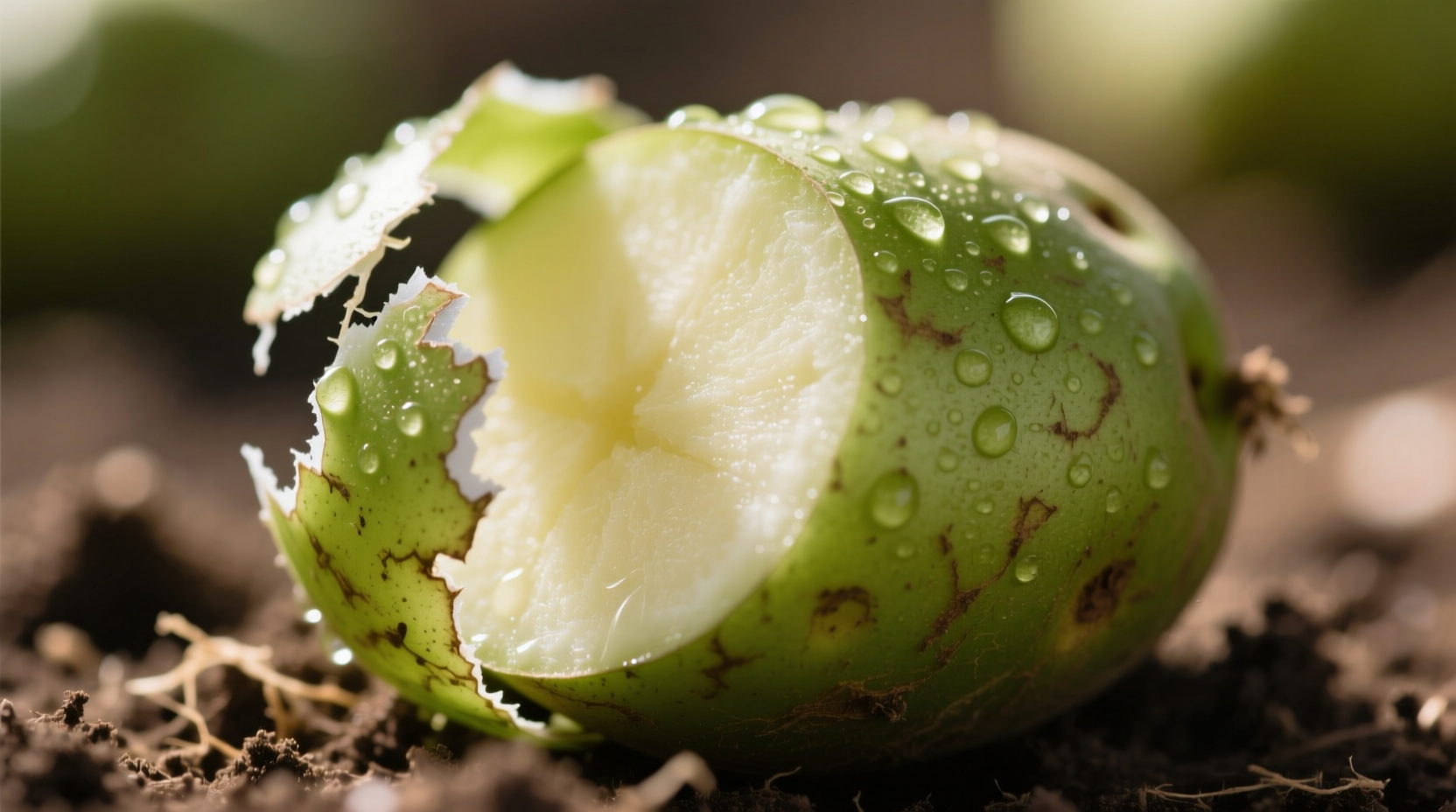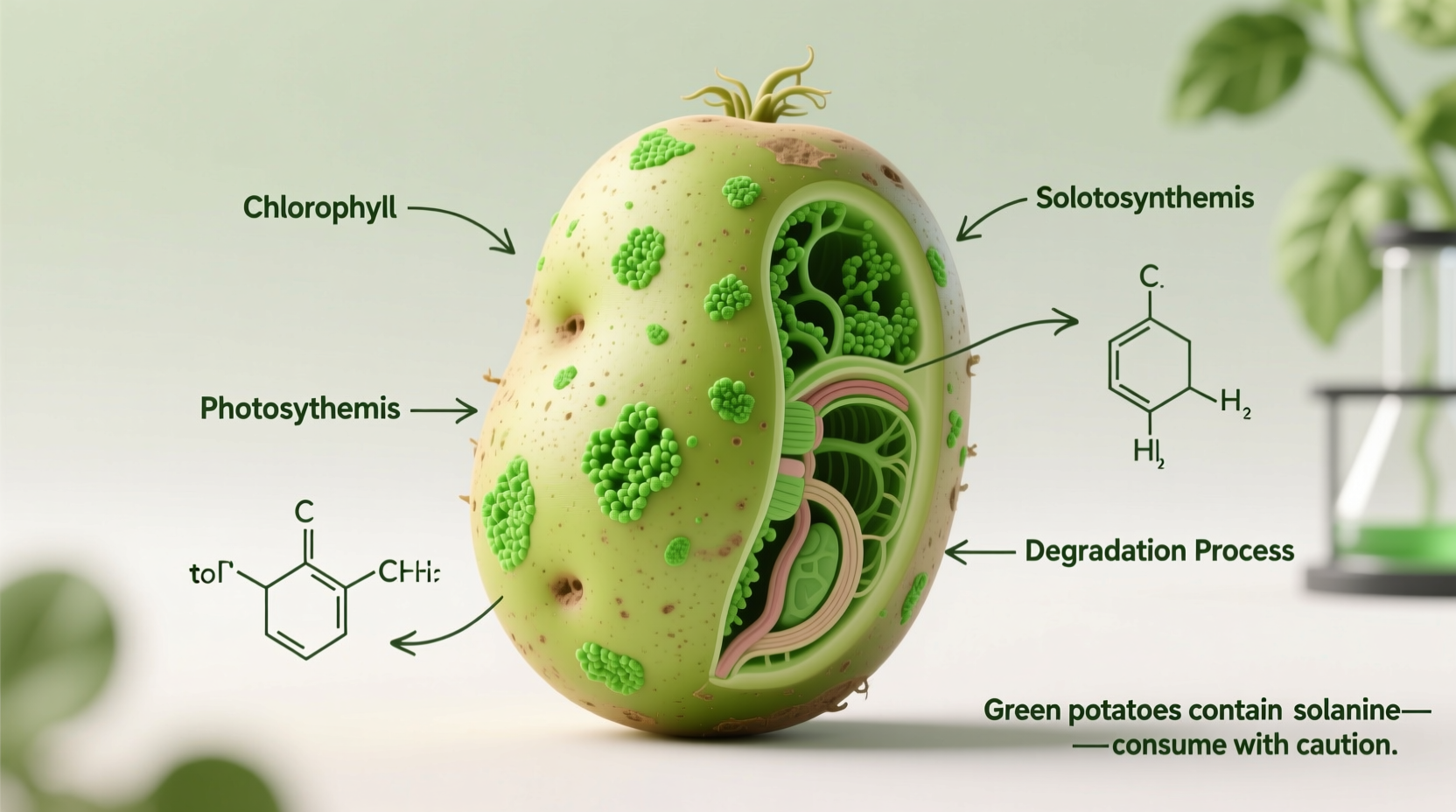Discover exactly why potatoes turn green, how much is dangerous, and practical steps to keep your family safe. This guide delivers science-backed food safety information you can trust, with clear action steps for handling green potatoes in your kitchen.
Why Potatoes Turn Green: The Science Explained
When potatoes are exposed to light, they produce chlorophyll—the same green pigment found in leafy vegetables. This harmless process signals a more serious issue: increased production of solanine and chaconine, naturally occurring glycoalkaloids that act as the potato's defense mechanism against pests and sunlight.
According to the U.S. Food and Drug Administration, solanine concentrations typically remain below 0.2 mg per gram in properly stored potatoes. However, when potatoes green significantly, levels can jump to 1 mg per gram or higher—the threshold where health risks begin.

How Much Green Is Dangerous? Understanding Risk Levels
Not all green potatoes require immediate disposal. The risk depends on both the extent of greening and how the potato is prepared:
| Greening Level | Solanine Content | h>Safe Handling Method|
|---|---|---|
| Small surface spots (under 1 inch) | 0.2-0.5 mg/g | Peel deeply (1/8 inch minimum) around affected areas |
| Moderate greening (1-3 inches) | 0.5-1 mg/g | Peel extensively or discard if greening penetrates deeply |
| Extensive greening (over 3 inches) | 1+ mg/g | Discard entire potato—peeling won't remove all toxins |
Timeline of Potato Greening: What Happens When
Understanding how quickly greening occurs helps prevent dangerous solanine buildup:
- 0-24 hours: Initial light exposure begins chlorophyll production—no significant solanine increase
- 2-3 days: Visible green spots appear; solanine levels begin rising
- 4-7 days: Extensive greening develops; solanine reaches potentially harmful levels
- 1+ week: Maximum solanine concentration—potato becomes unsafe regardless of preparation
Practical Steps: What to Do With Green Potatoes
Follow this decision tree when you discover green potatoes:
- Assess greening extent: Measure affected areas using a ruler
- Peel test: Remove 1/8 inch of flesh around green spots—if green persists, discard
- Smell check: Bitter odor indicates high solanine—discard immediately
- Preparation matters: Never fry green potatoes—high heat concentrates toxins
- Special caution: Discard green potatoes intended for children, pregnant women, or immunocompromised individuals
Preventing Potato Greening: Storage Best Practices
Proper storage stops greening before it starts. The Oregon State University Extension Service recommends these evidence-based methods:
- Store in complete darkness—cardboard boxes work better than clear plastic bags
- Maintain temperature between 45-50°F (7-10°C)—never refrigerate
- Ensure good air circulation with mesh or paper bags
- Keep away from onions—ethylene gas accelerates greening
- Use within 2-3 weeks for best quality and safety
When Green Potatoes Become Dangerous: Recognizing Symptoms
Solanine poisoning symptoms typically appear 8-12 hours after consumption. The Centers for Disease Control identifies these warning signs:
- Mild exposure (1-5 mg/kg body weight): Nausea, stomach cramps, headache
- Moderate exposure (5-10 mg/kg): Vomiting, diarrhea, fever, rapid pulse
- Severe exposure (10+ mg/kg): Neurological symptoms including hallucinations and paralysis
Seek immediate medical attention if multiple symptoms occur after eating green potatoes. Most cases resolve within 24 hours with supportive care, but severe cases require hospital treatment.
Common Misconceptions About Green Potatoes
Several myths persist about green potatoes that could put consumers at risk:
- Myth: "Peeling removes all toxins"—Fact: Solanine penetrates beyond surface areas
- Myth: "Cooking destroys solanine"—Fact: The toxin withstands normal cooking temperatures
- Myth: "Only green skin is dangerous"—Fact: Green flesh indicates deeper toxin penetration
- Myth: "Organic potatoes don't produce solanine"—Fact: All potato varieties produce this natural defense compound
Special Considerations for Vulnerable Groups
Certain populations face higher risks from solanine exposure:
- Children: Lower body weight means smaller toxic dose—discard any green potatoes intended for kids
- Pregnant women: Solanine may cross placental barrier—extra caution recommended
- Immunocompromised individuals: Reduced ability to process toxins—avoid all green potatoes
- People with digestive disorders: May experience amplified symptoms











 浙公网安备
33010002000092号
浙公网安备
33010002000092号 浙B2-20120091-4
浙B2-20120091-4